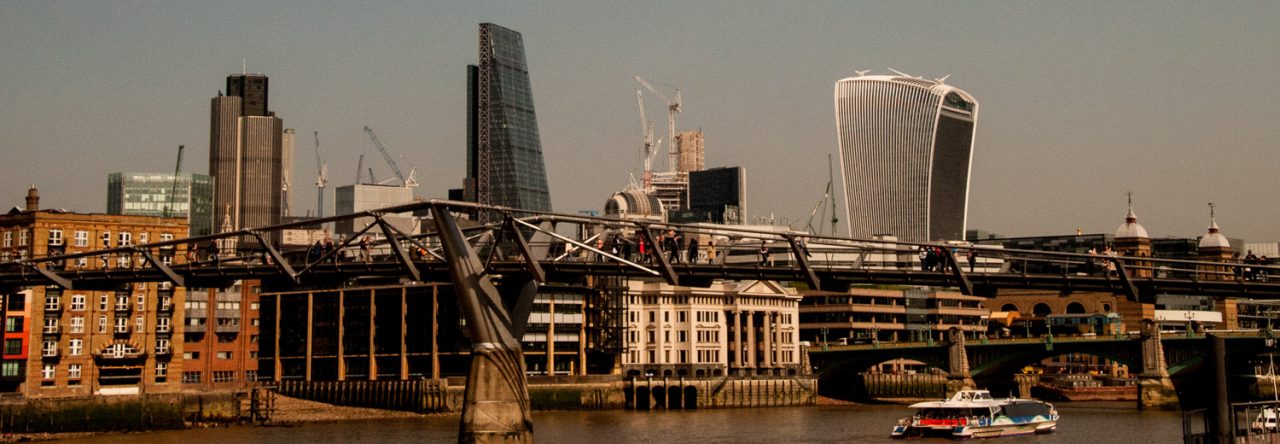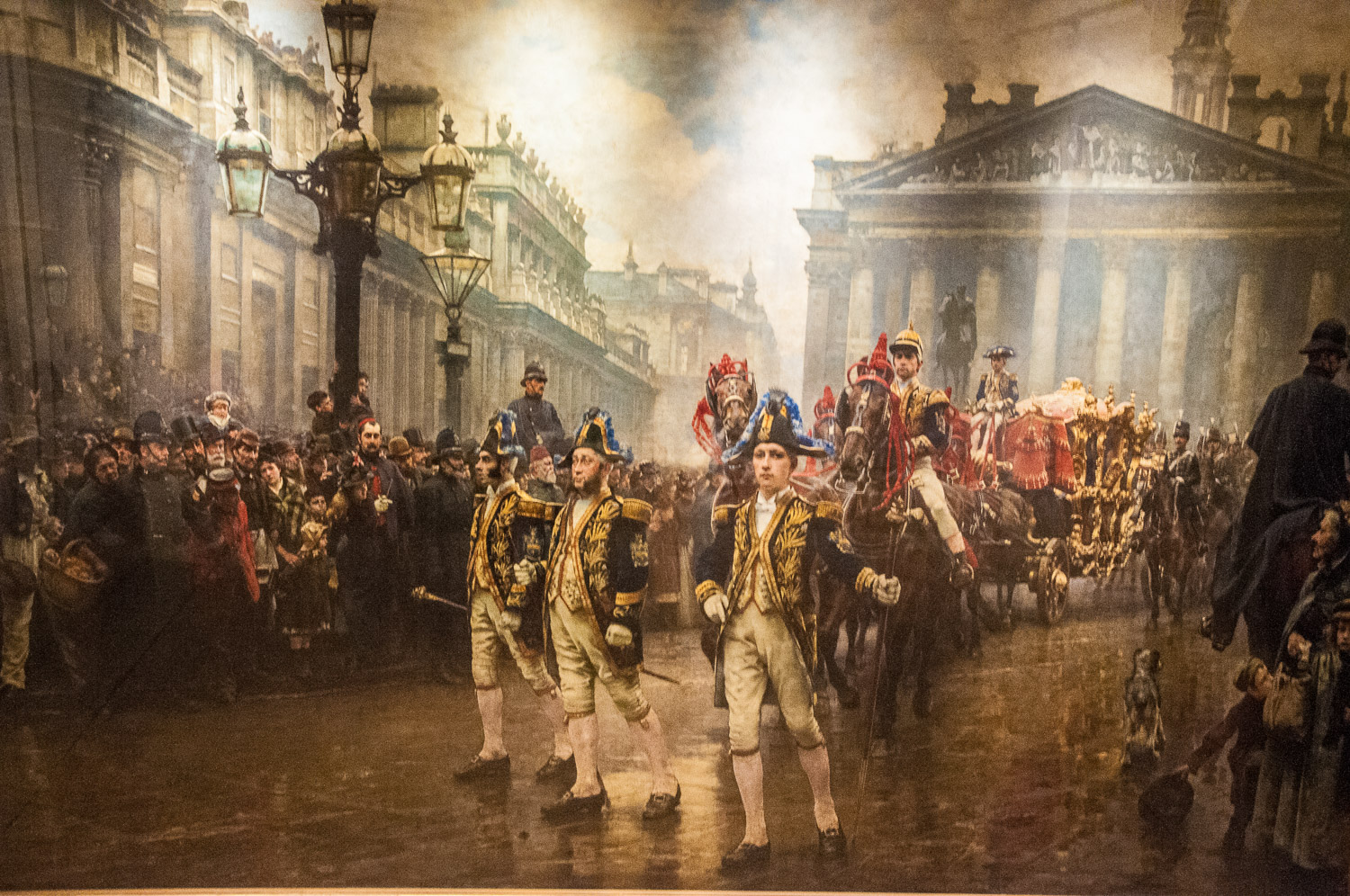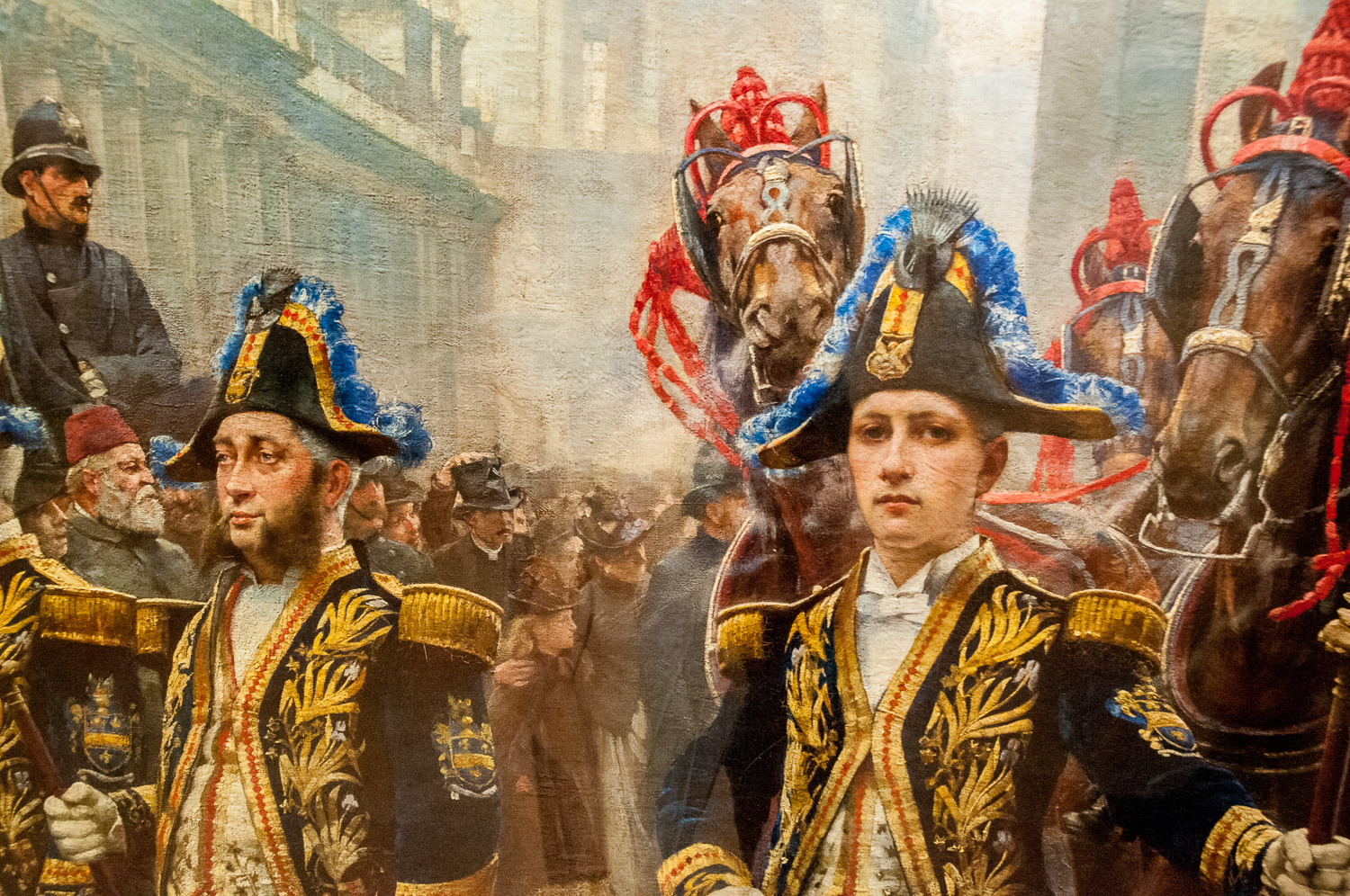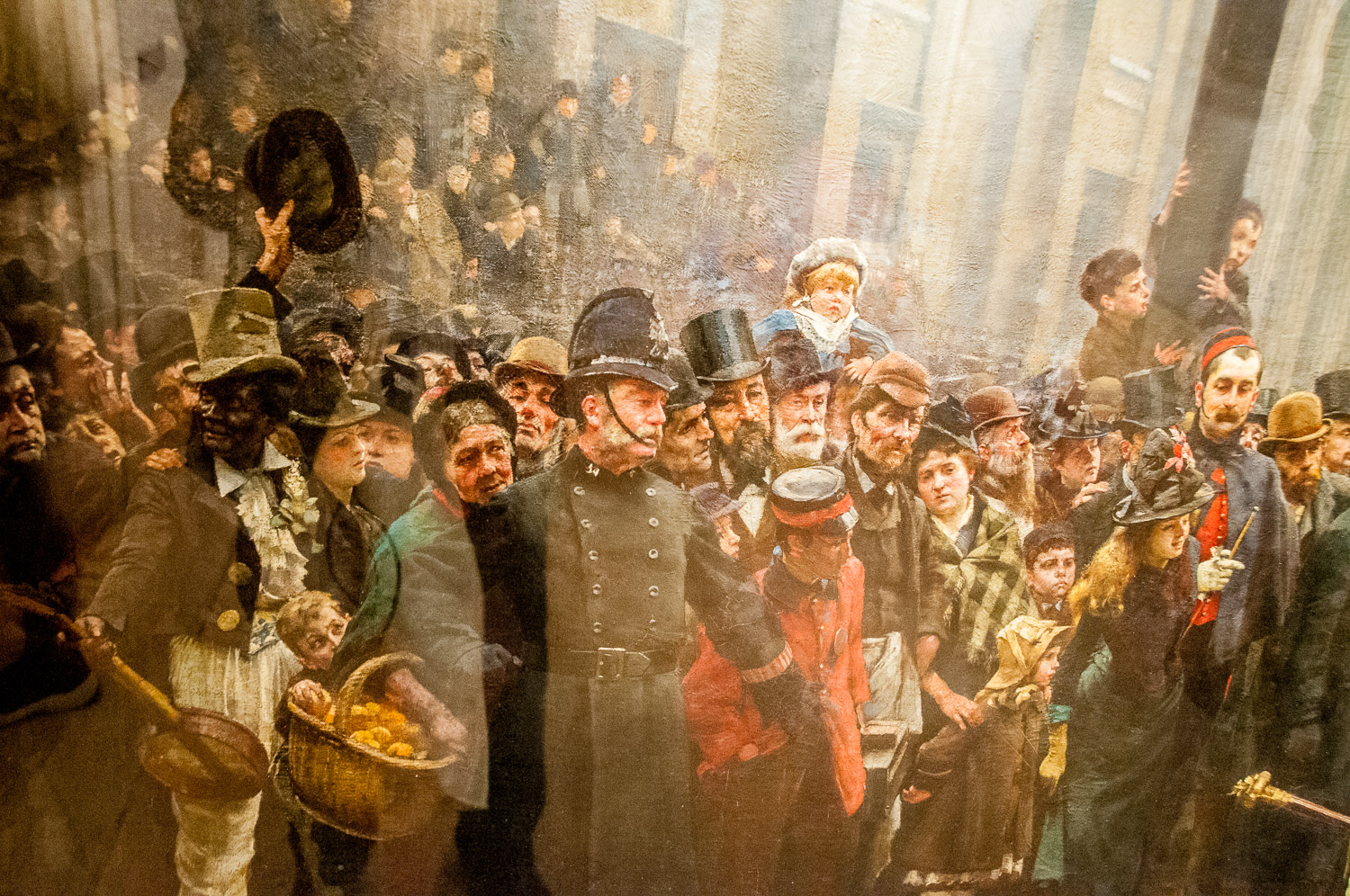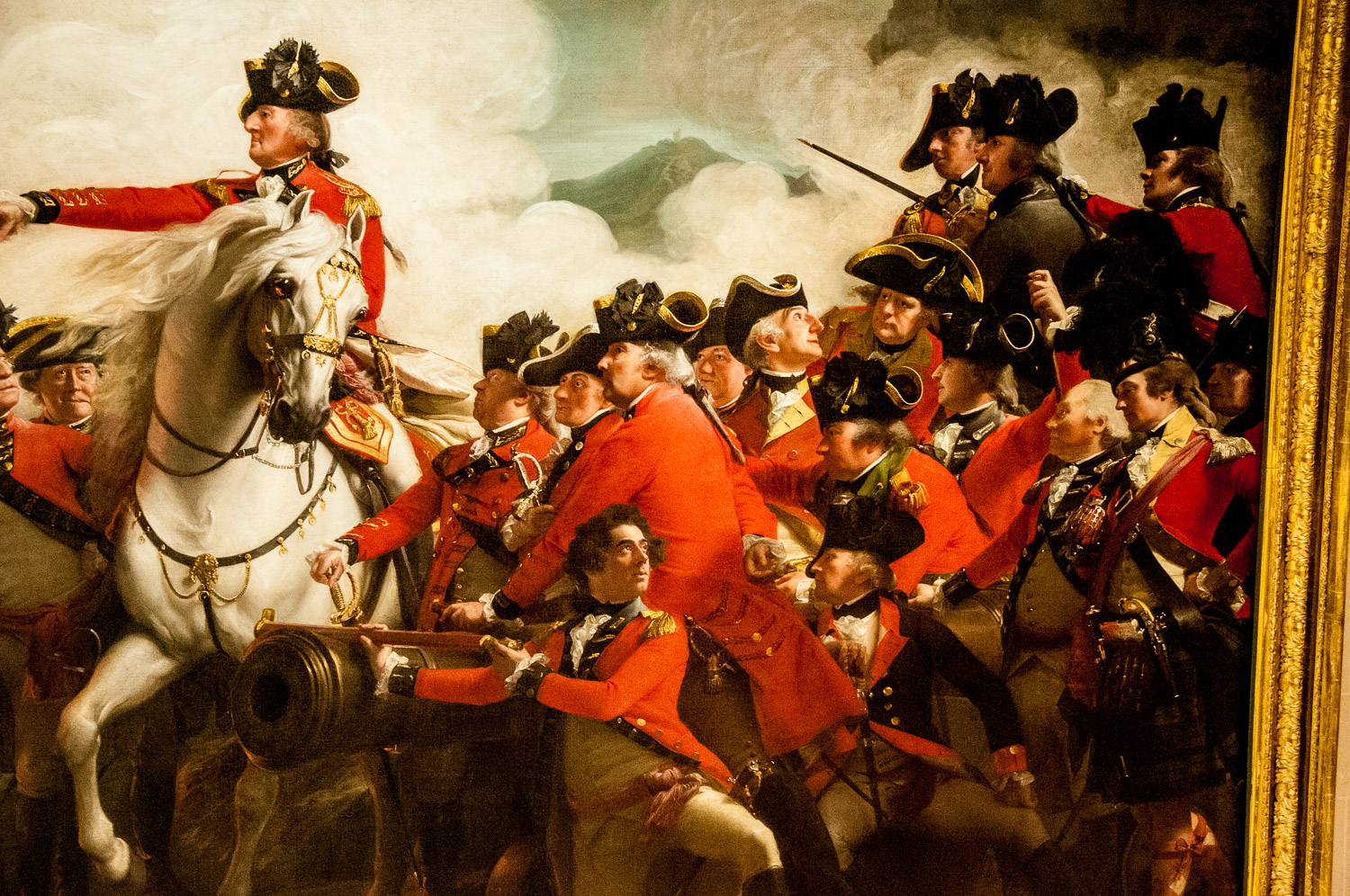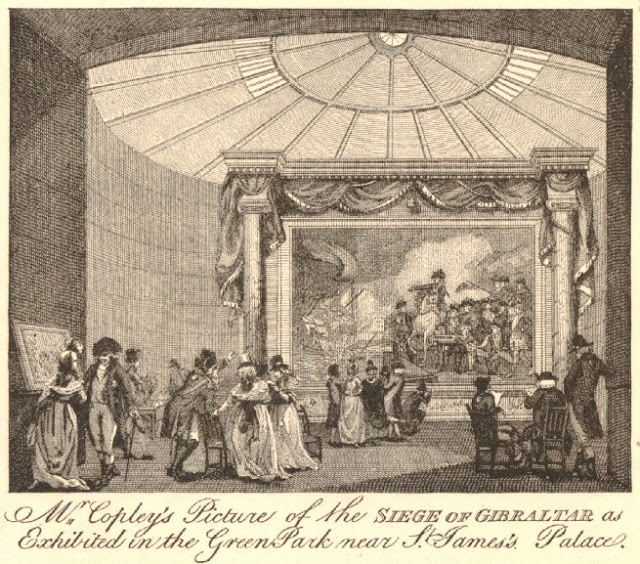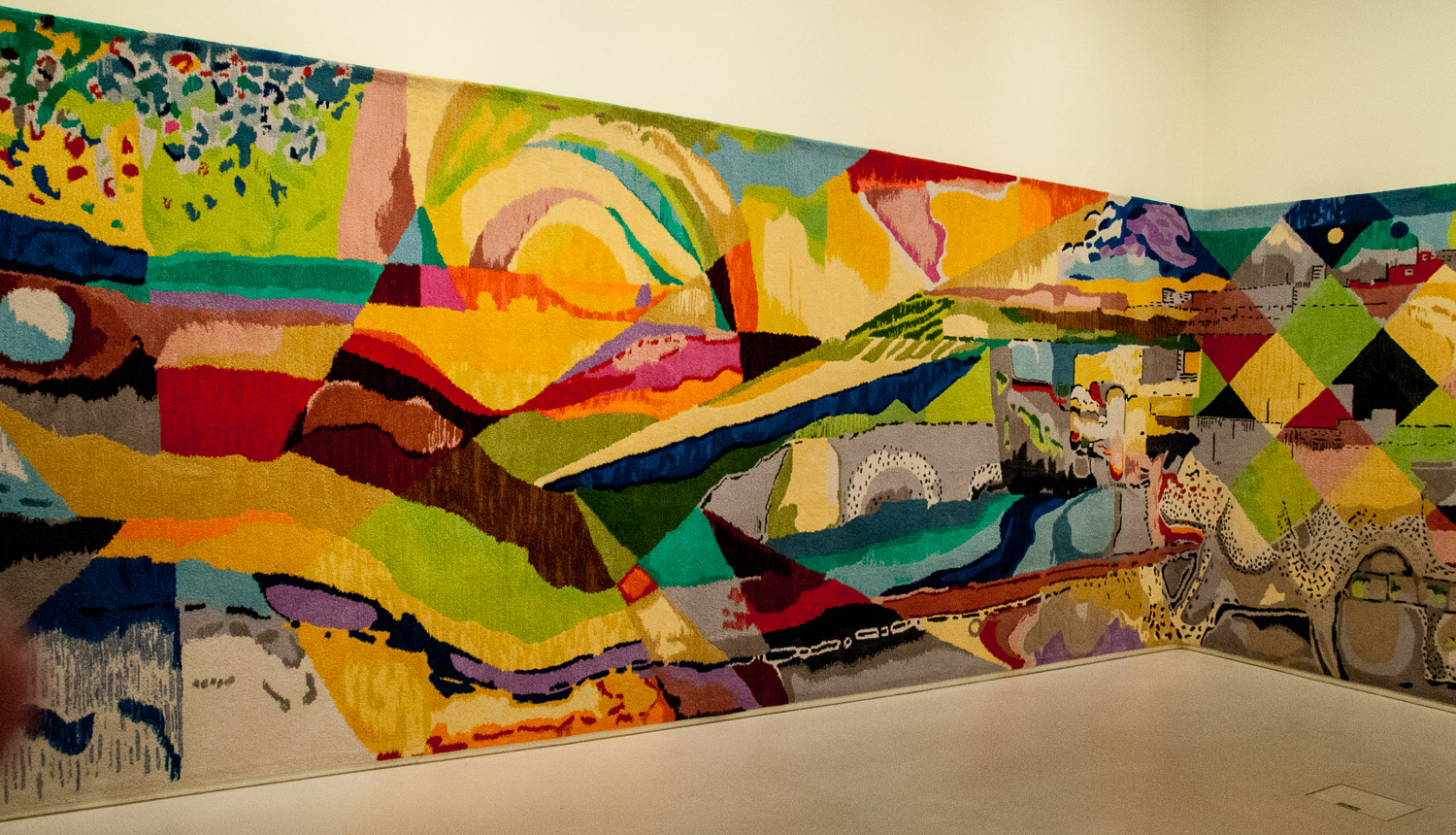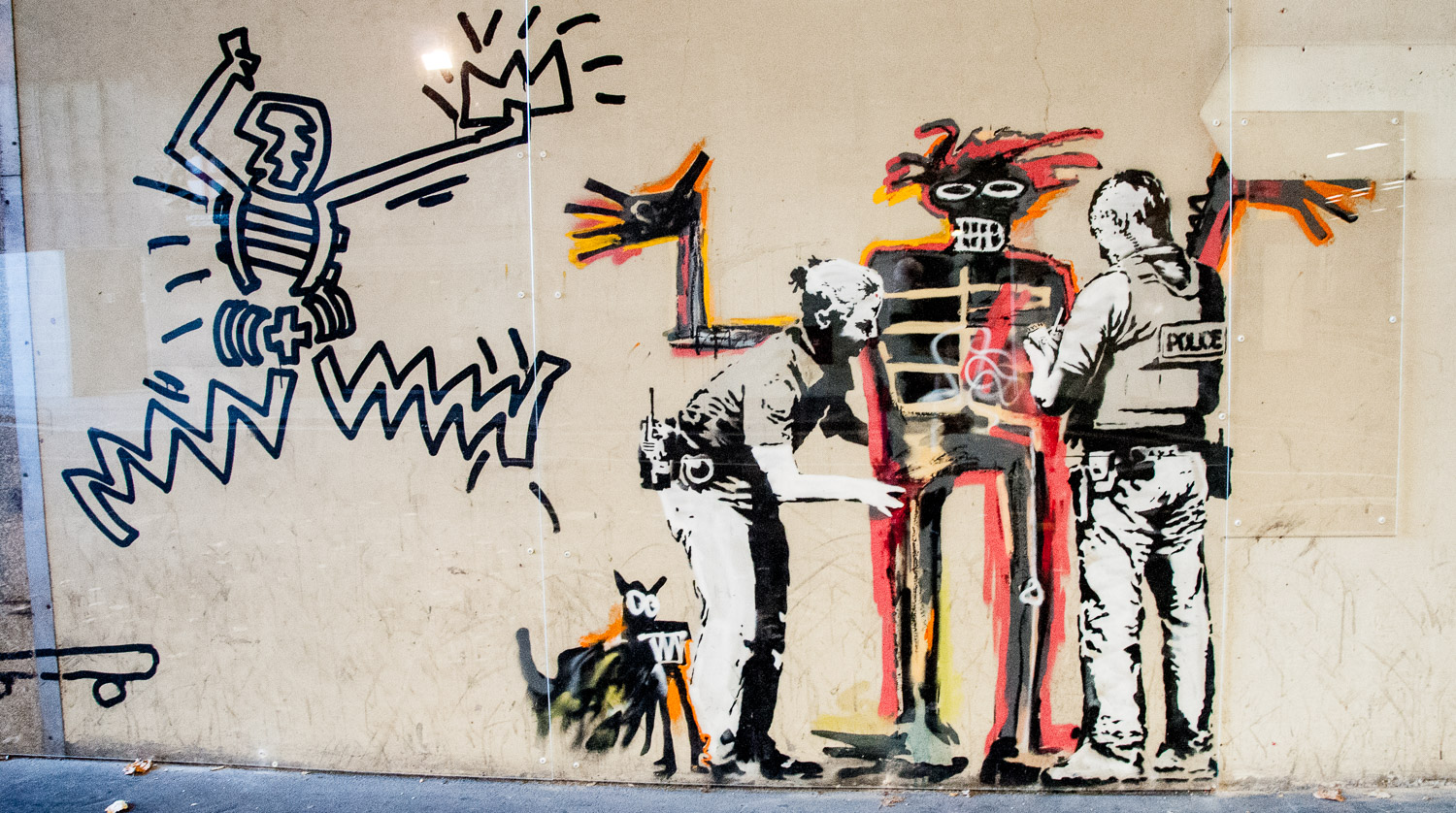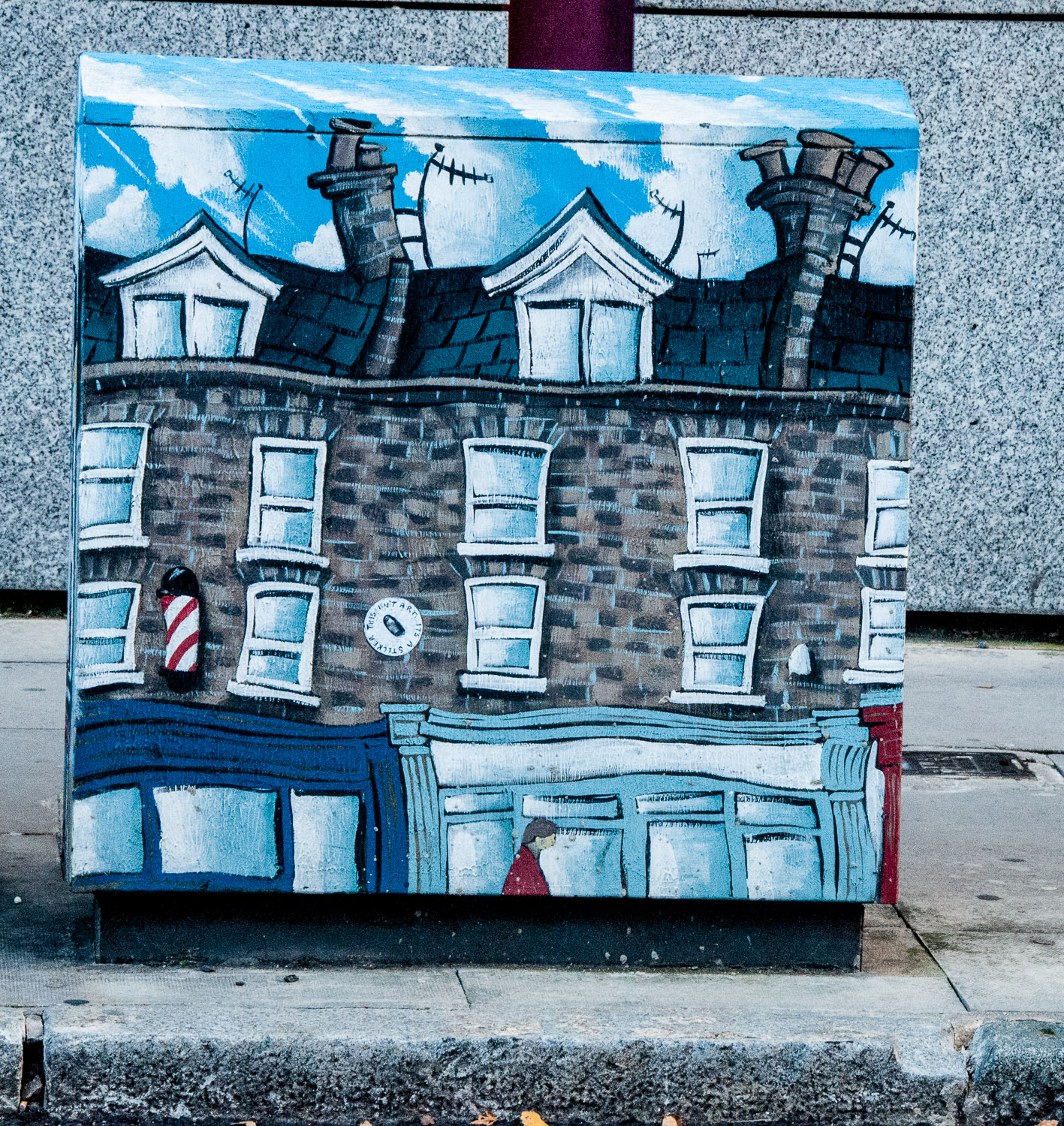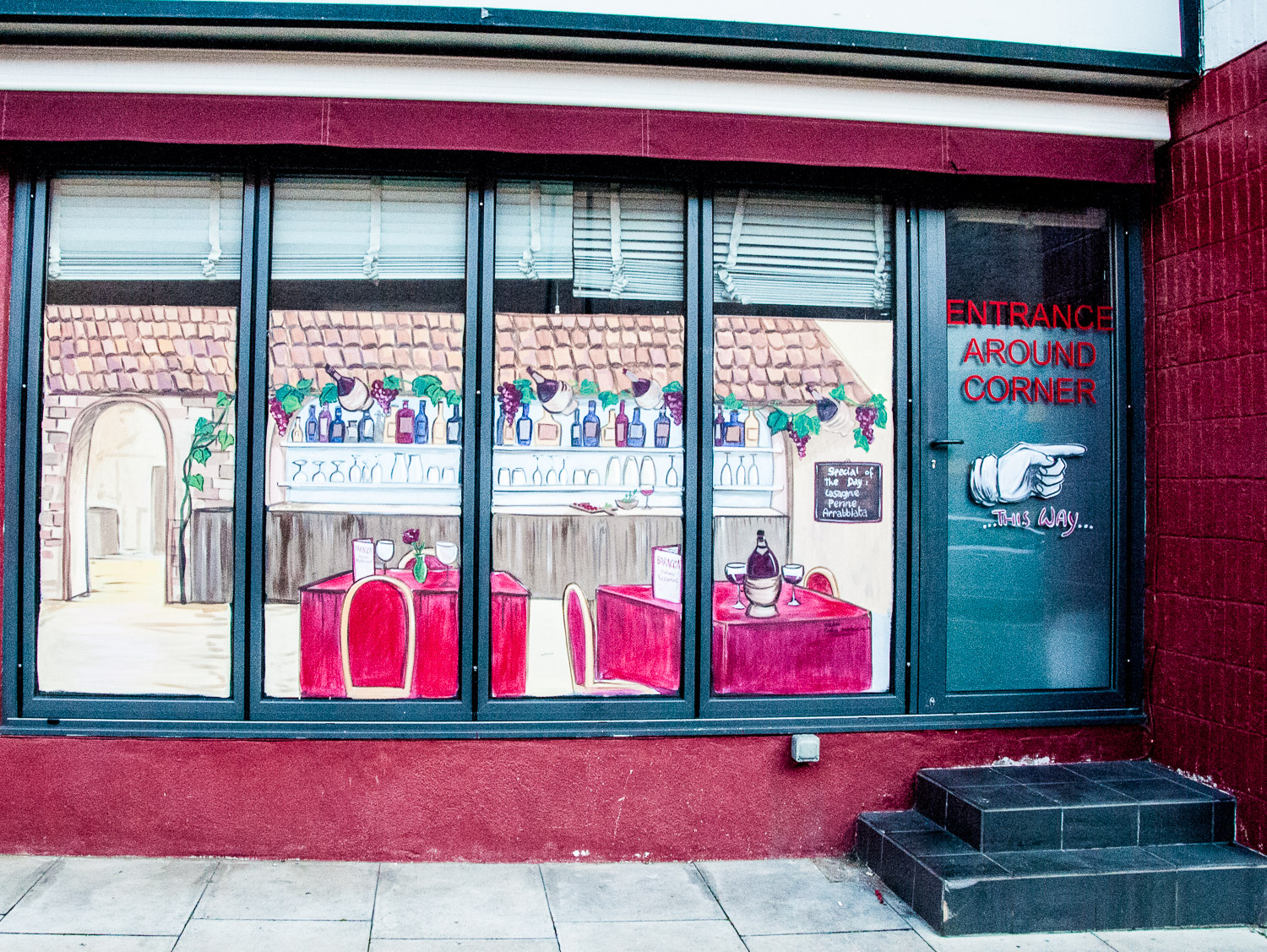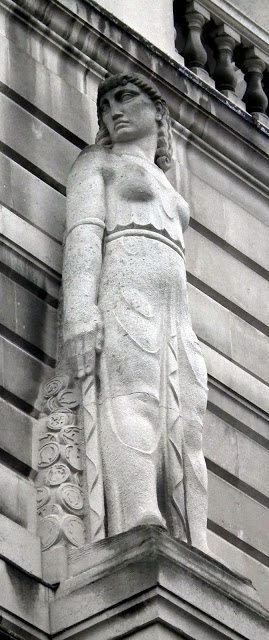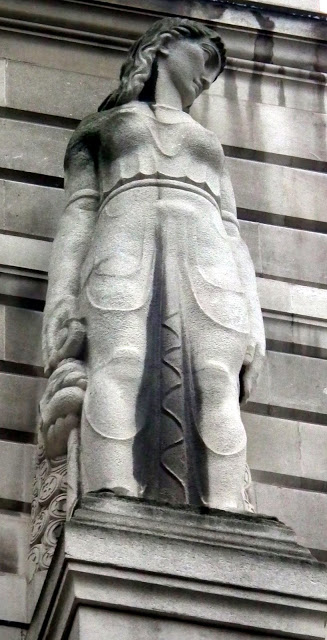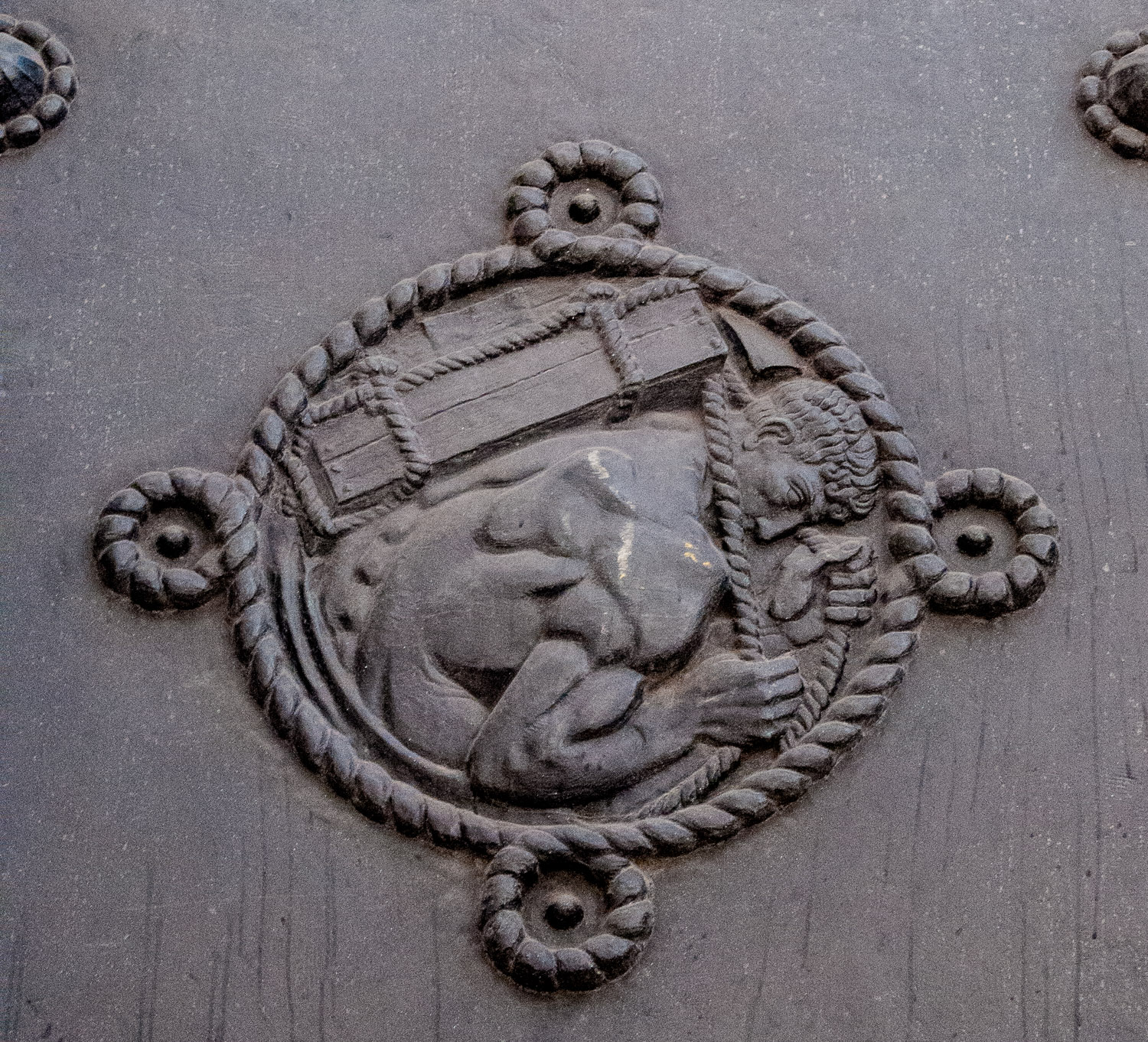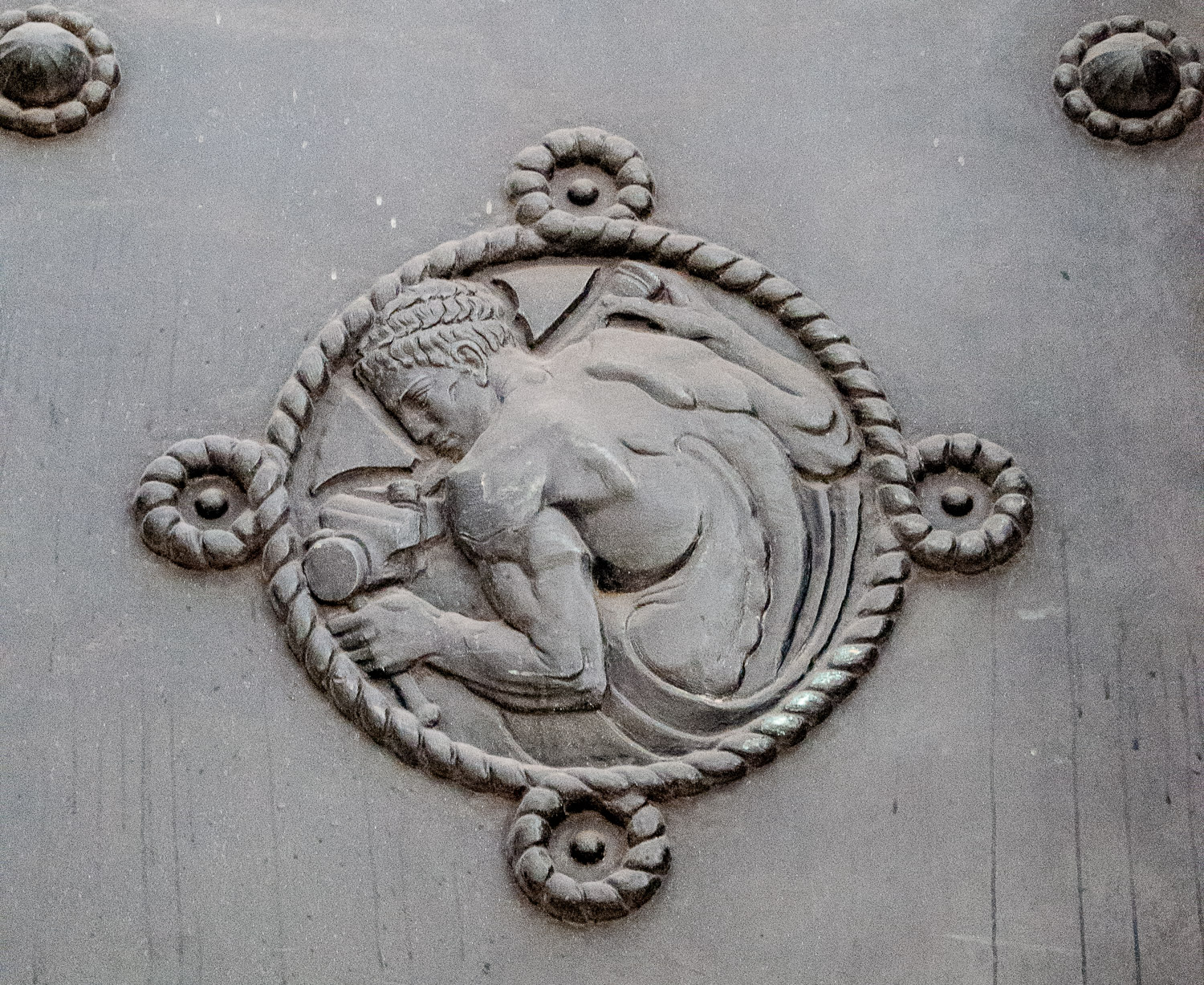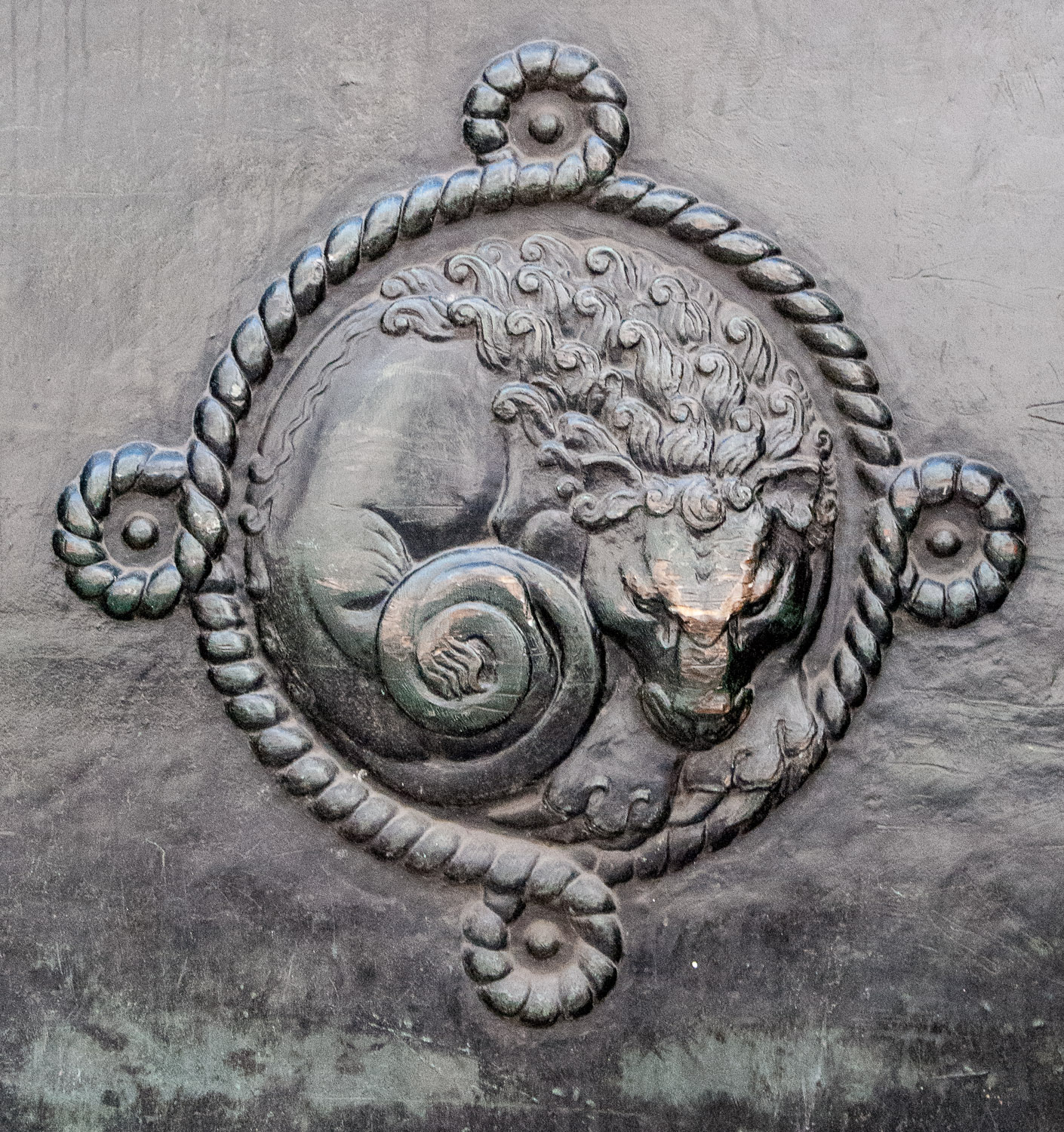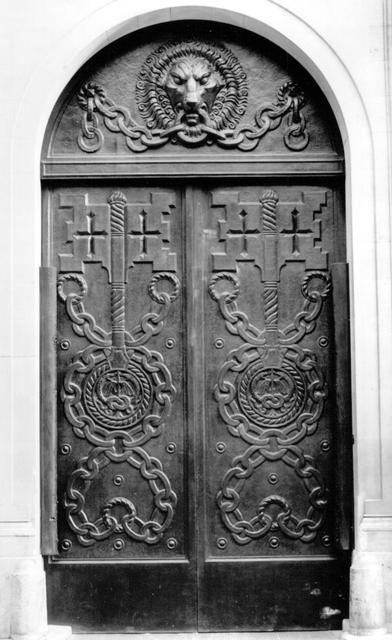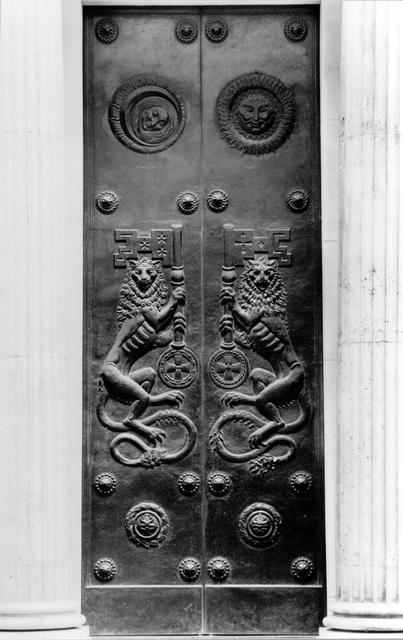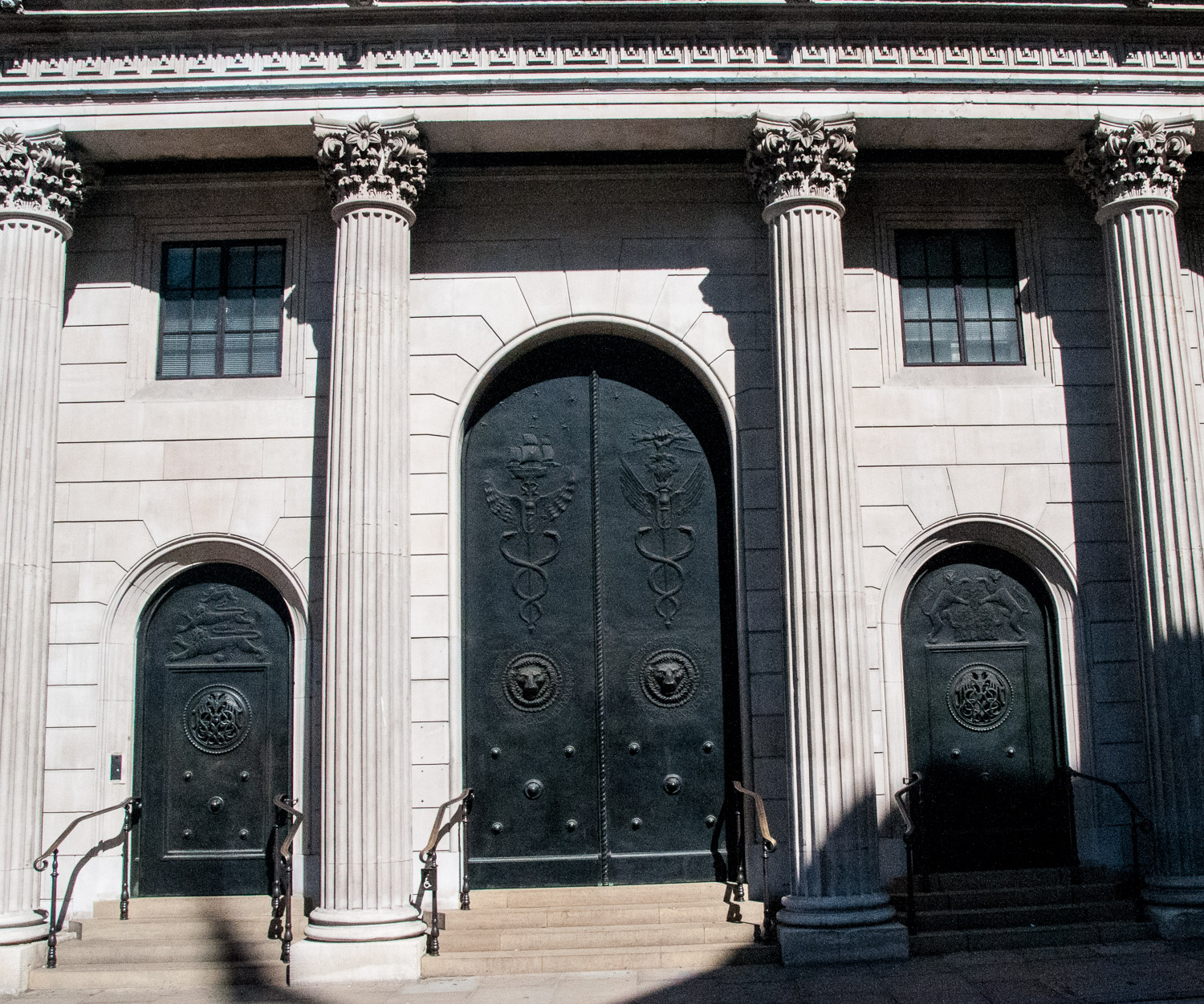The Barbican Highwalk is the last significant remnant of the post War City ‘pedway’ dream – the ambitious plan to separate pedestrians from traffic using elevated ‘pavements in the sky’. The Highwalk, at first floor or Podium level, threads its way through the Estate, also embracing entrances to the Arts Centre, library and restaurants. City planners for a long time insisted that new developments had to include potential pedway access, which also explains why the main entrance to the Museum of London is at first floor level. The grand plan was gradually abandoned but exploring the Highwalk will give you a glimpse of the original vision, especially if you seek out the extension over London Wall Place.
Today, however, I am going to concentrate on some of the items that have found a home on the walkways since their construction, starting at the Museum of London.
Outside the Museum entrance is Union – Horse with Two Discs by Christopher Le Brun (2001) …
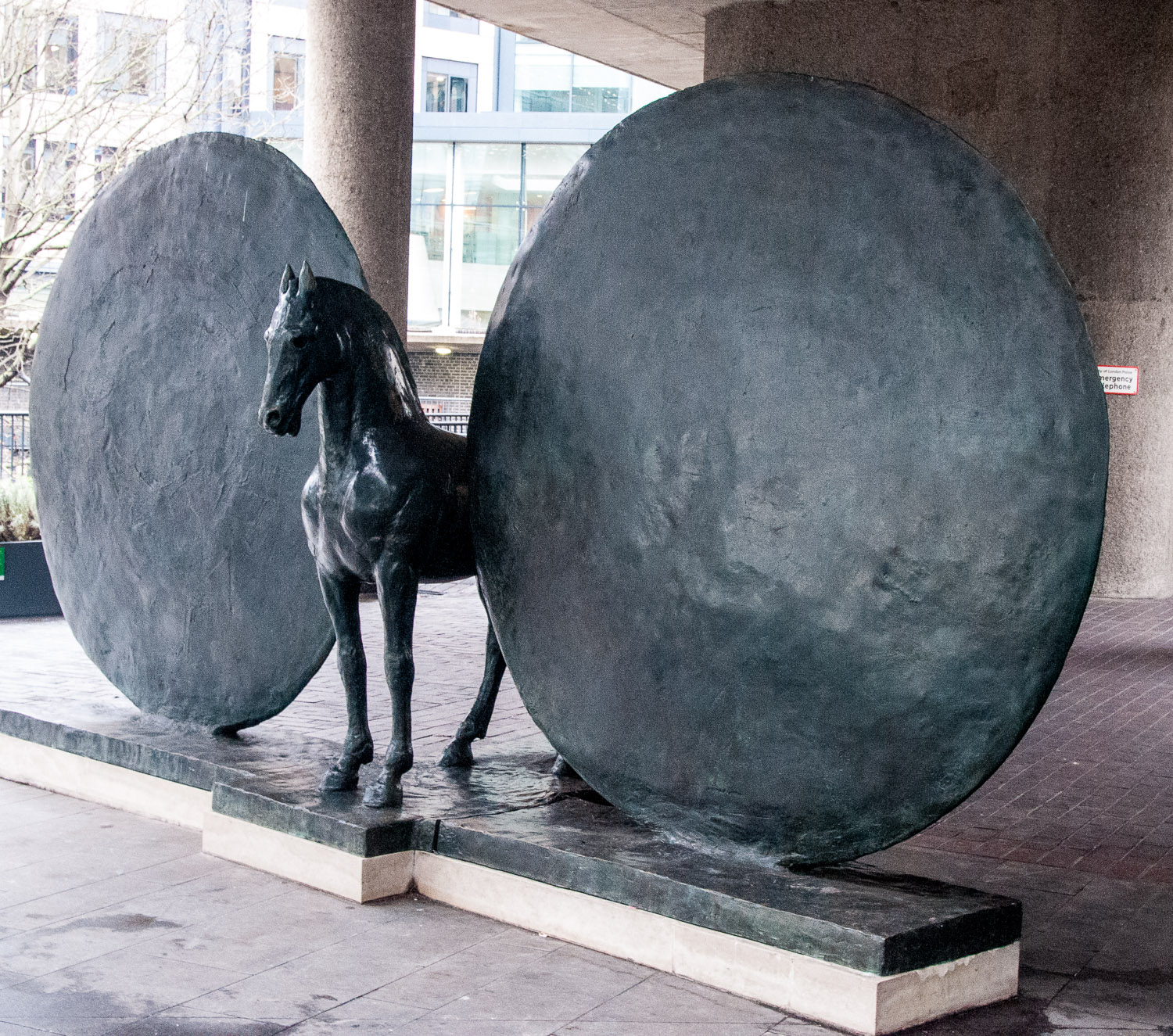
In a note nearby the artist explains that to him it is important that horses and riders are ‘not seen as real (but) an entrance or key to the place that I want to enter. It’s as if “the horse” enables the journey rather than providing the final subject’.
At the other side of the entrance is The Aldersgate Flame …
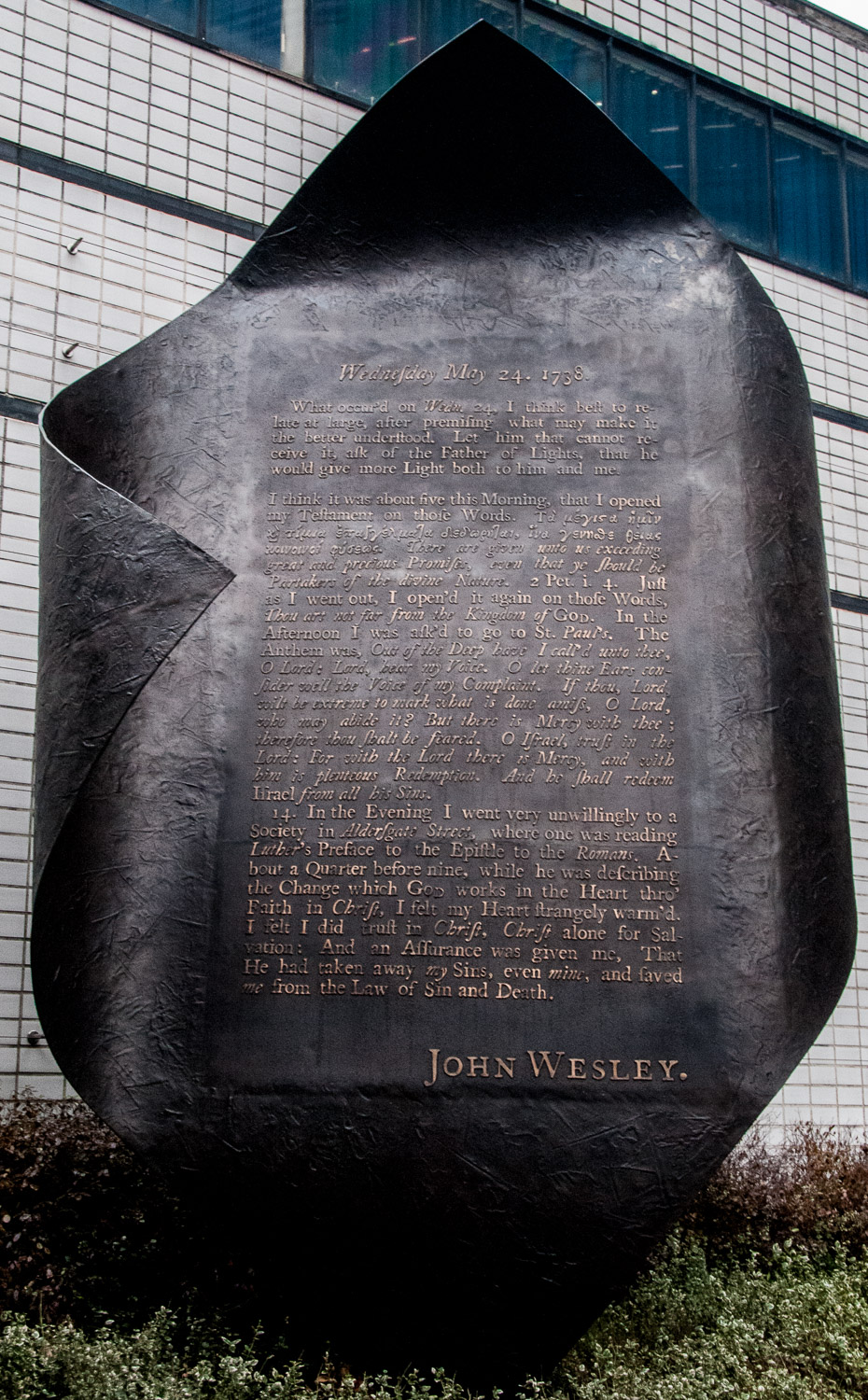
Placed here in 1981, it commemorates the approximate location at street level of John Wesley’s conversion on 24 May 1738 and consists of facsimile extracts from his Journal. From that day onward the founder of Methodism set out on a mission covering thousands of miles and delivering over 40,000 sermons -‘The world is my parish’. The monument, which is in bronze, has recently been restored and there is an interesting article about that work and its challenges here.
Crossing the Bastion Highwalk towards the bar and restaurant on Alban Gate you will encounter two naked writhing dancers. Quite often I have seen people pose for photographs whilst trying to mimic the figures’ movements – they have not found it easy …
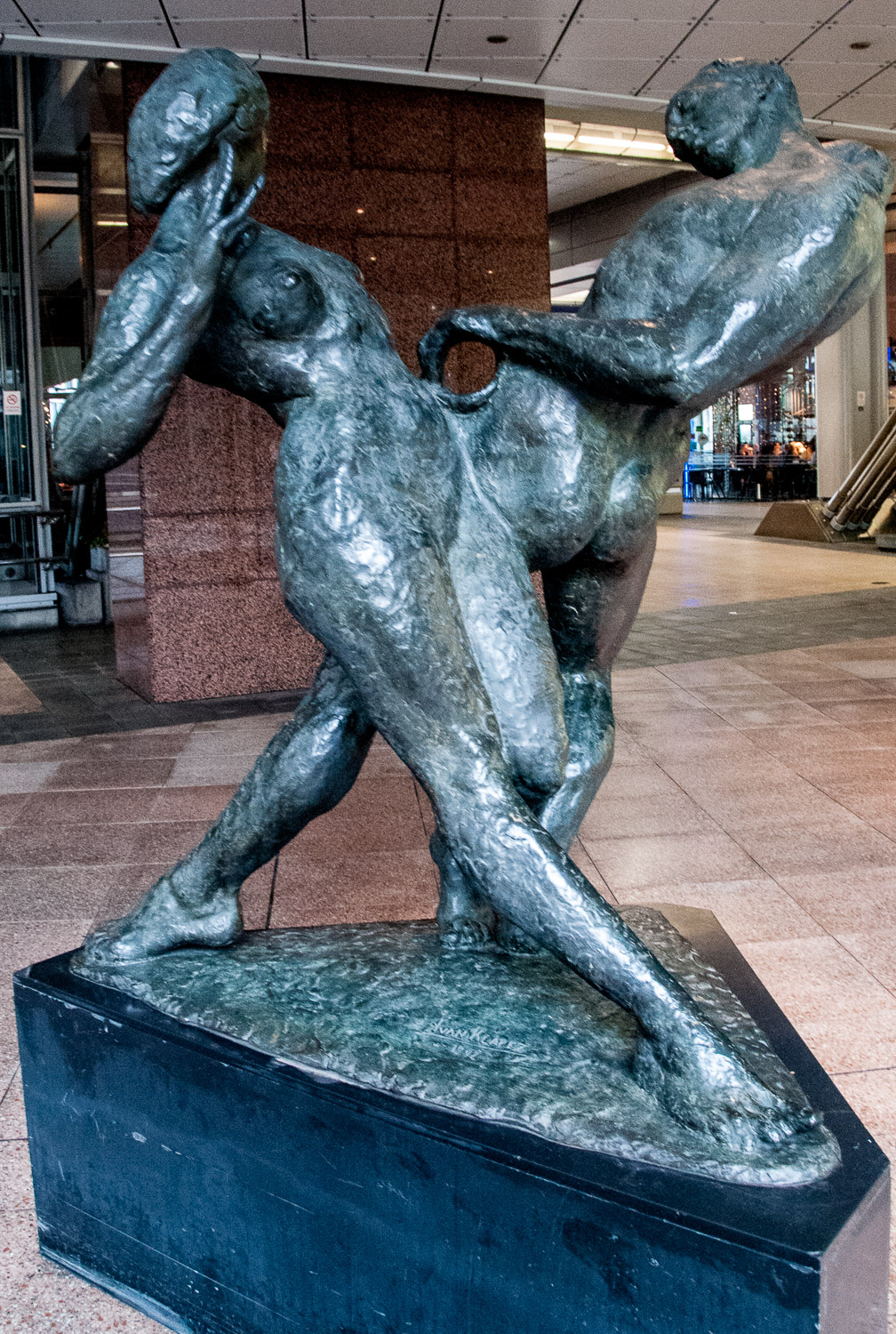
The work, called Unity, is by the Croatian Sculptor Ivan Klapez. It was commissioned by the building developers MEPC in 1992 and marked a turning point is his career.
Follow the infamous yellow line on the pavement and you will be guided into the Barbican Centre itself where Zoe the Barbican Muse indicates the way in …
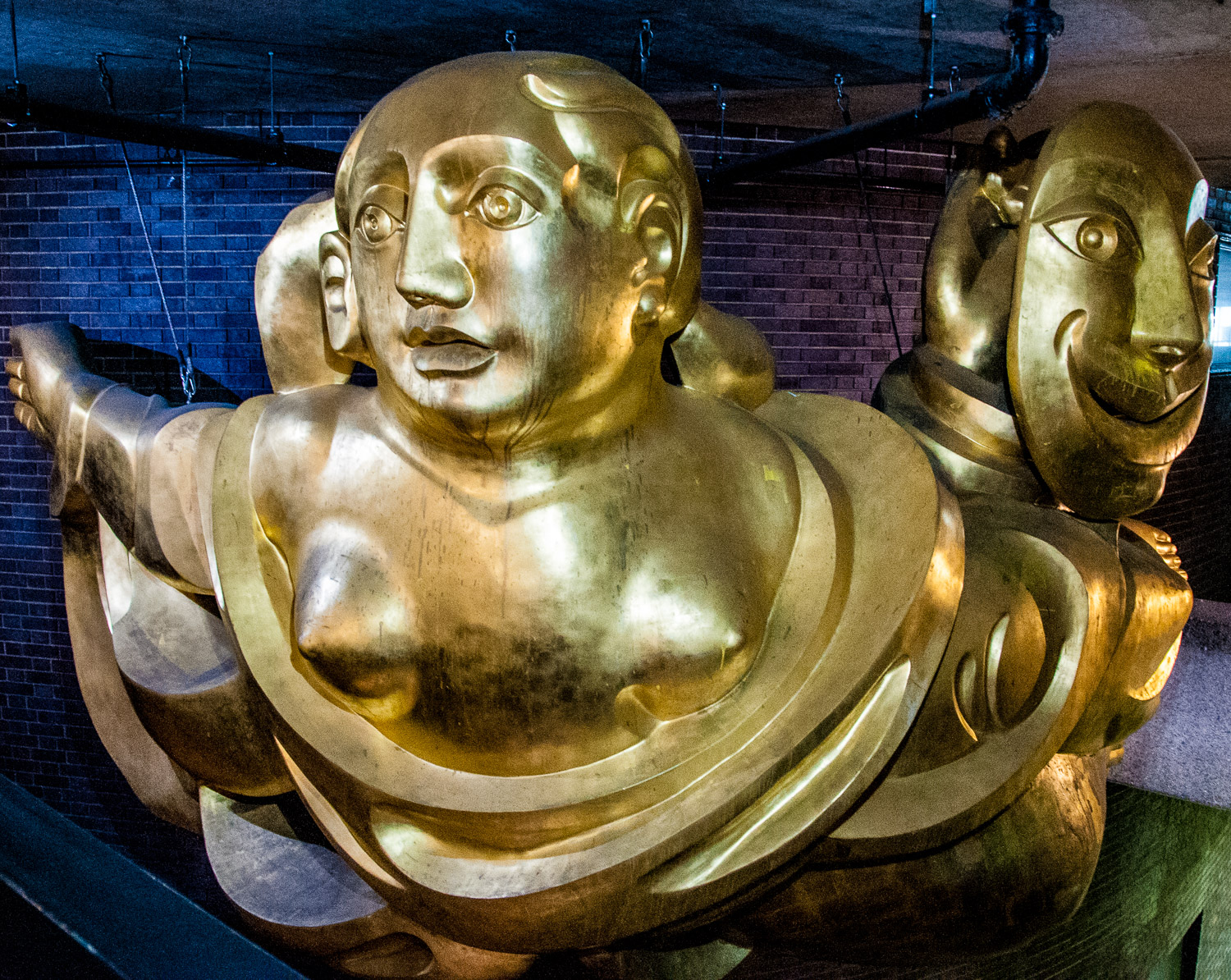
A little further ahead on the left is the Osteria restaurant and opposite, in a space that is rather poorly lit, is this figure …
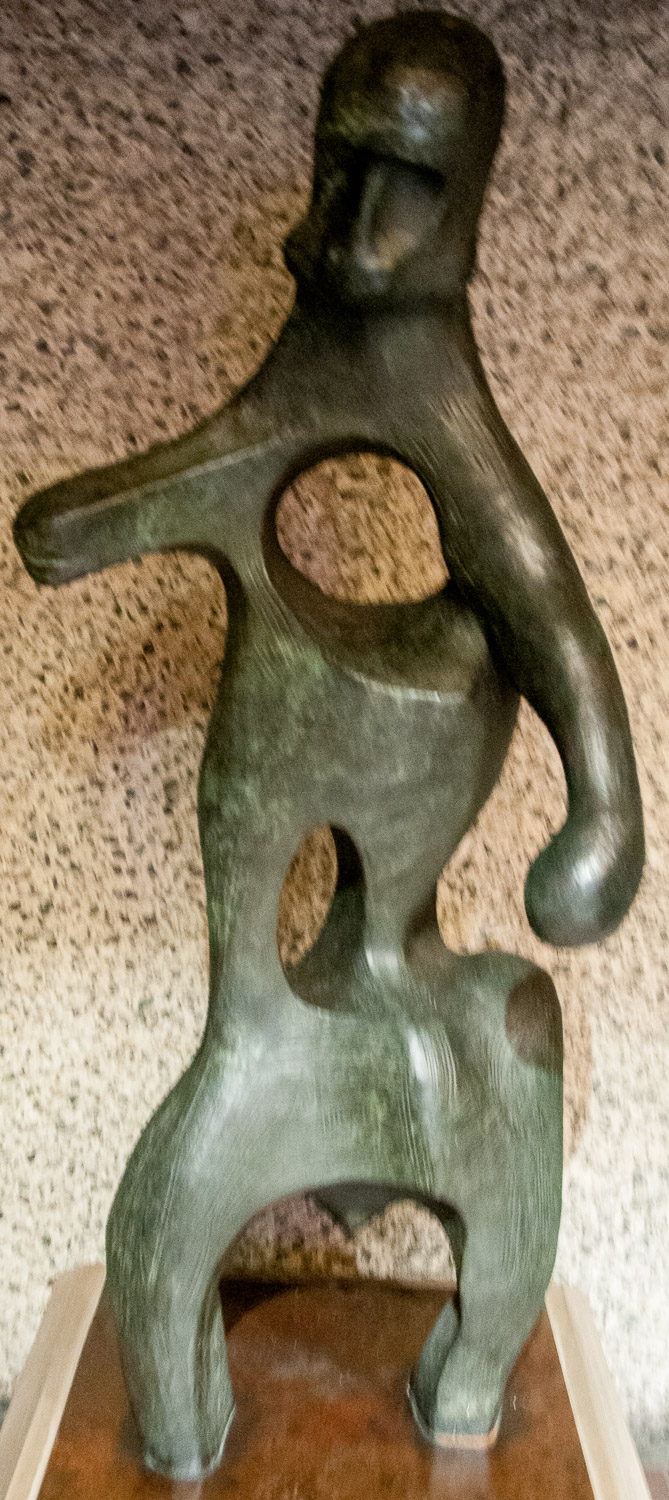
Entitled Gladiator, it was presented by Lady Sarah Cohen in memory of her late husband Sir John Edward Cohen, the founder of Tesco. The work was created in 1973 by Canadian born Israeli sculptor Eli Elan (1928-1982).
I have saved my favourite installation to last – Dorothy Annan’s magnificent murals on the Highwalk between the Centre and Speed House …
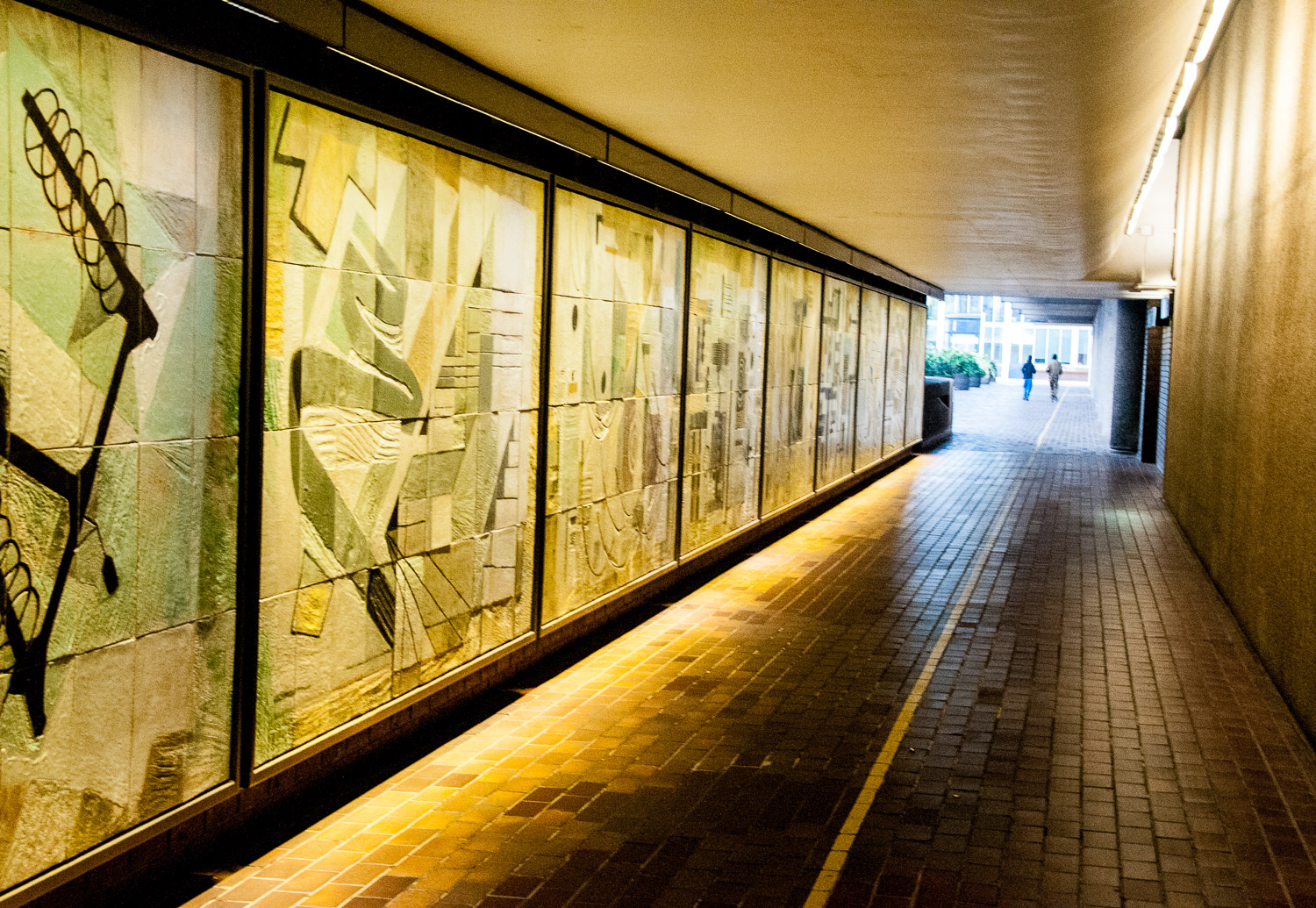
Commissioned by the Ministry of Works in 1960, they originally graced the largest telephone exchange in London, the Fleet Building on Farringdon Street. The panels feature stylistic images of telecommunications equipment and are a striking example of 1960s mural art. When the demolition of the building was planned the murals were granted Listed status and moved in 2013 to their present location.
Annan visited the Hathernware pottery in Loughborough and hand-scored her designs onto each wet clay tile. There are nine panels in all and here are three of them with their titles …

Radio Communications and Television.
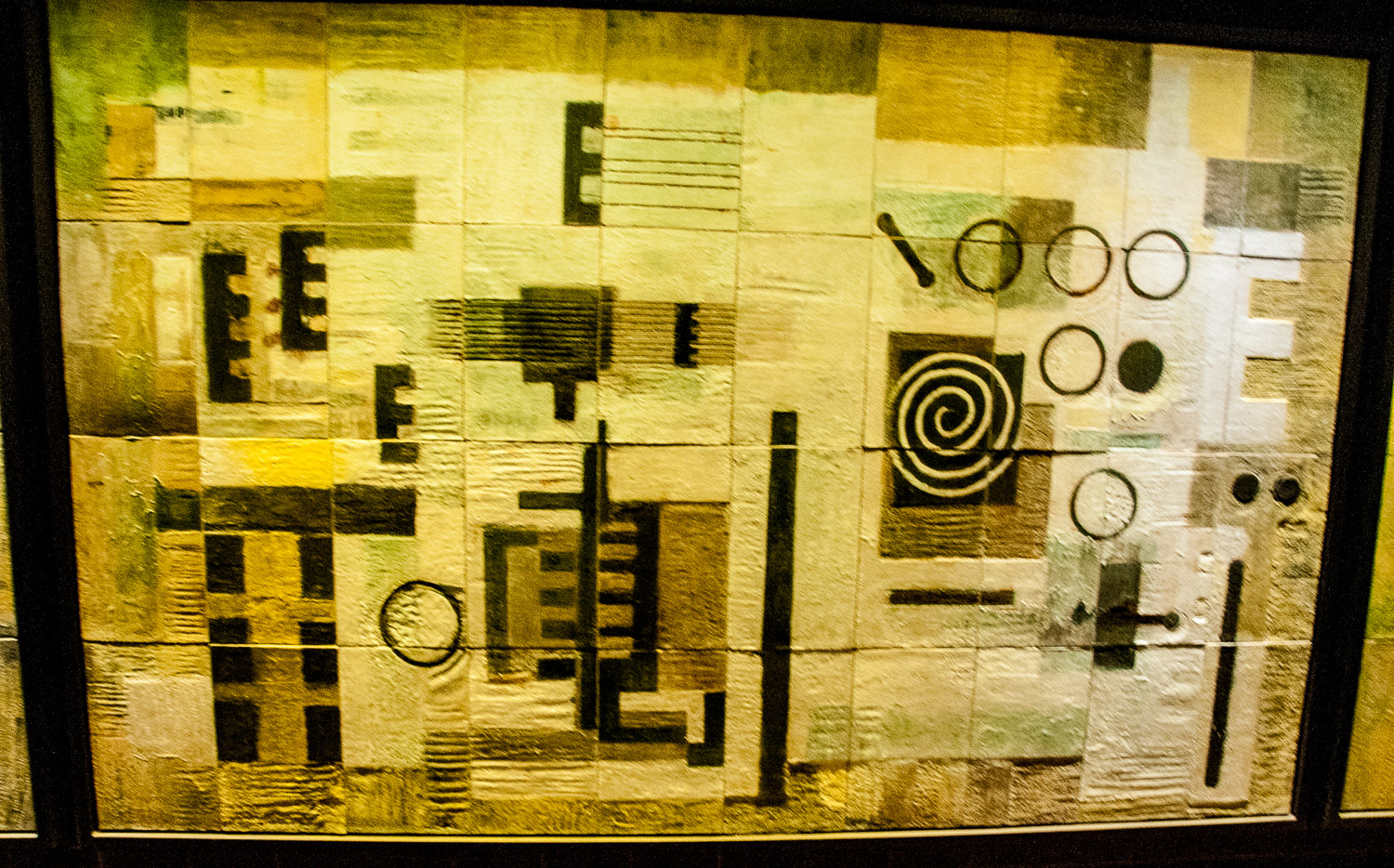
Cable Chamber with Cables Entering from Street.
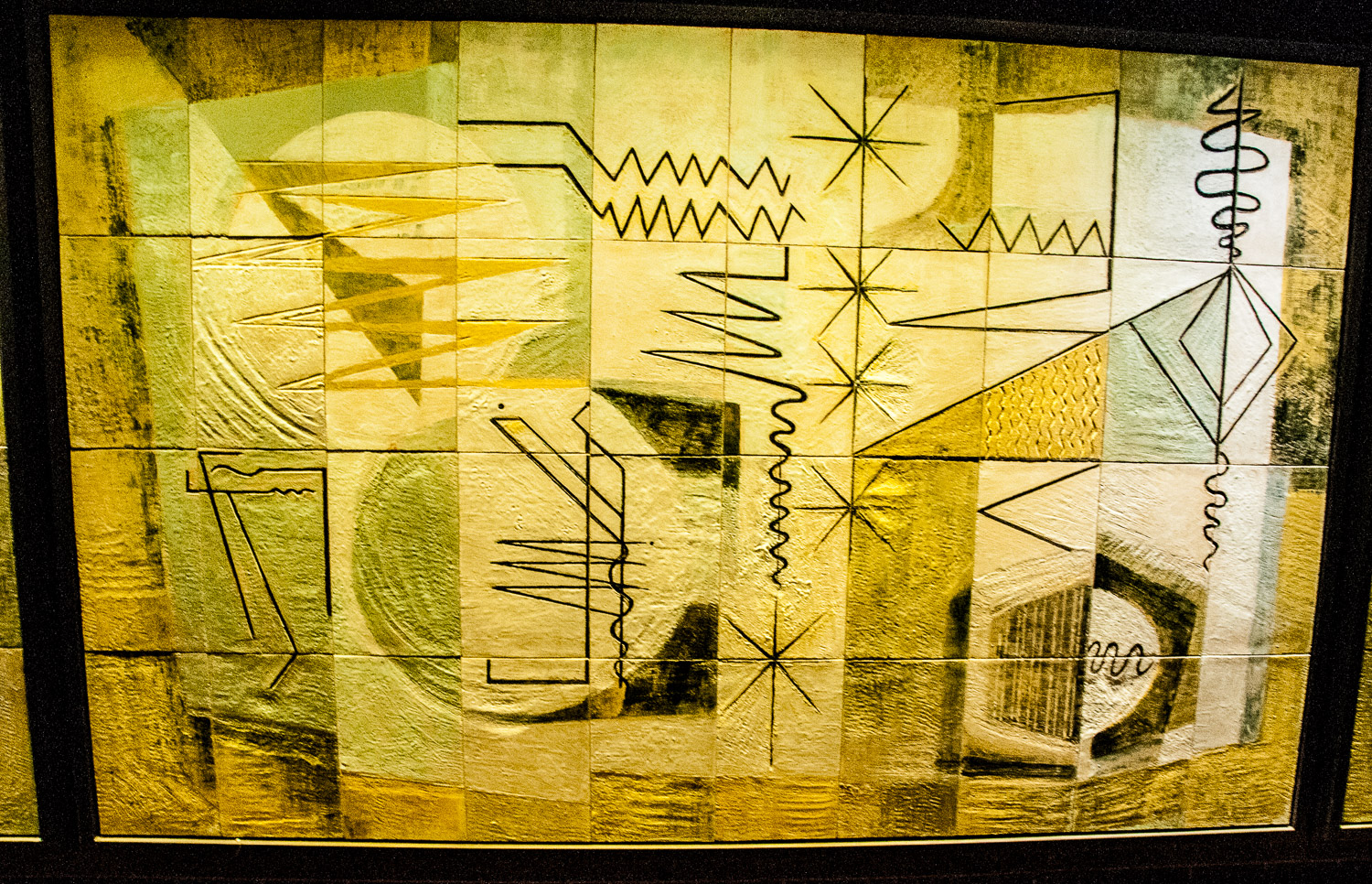
Impressions Derived from the Patterns Produced in Cathode Ray Oscilligraphs used in testing.
I love the creamy texture of the ceramic surfaces, their look much enhanced by carefully designed lighting …
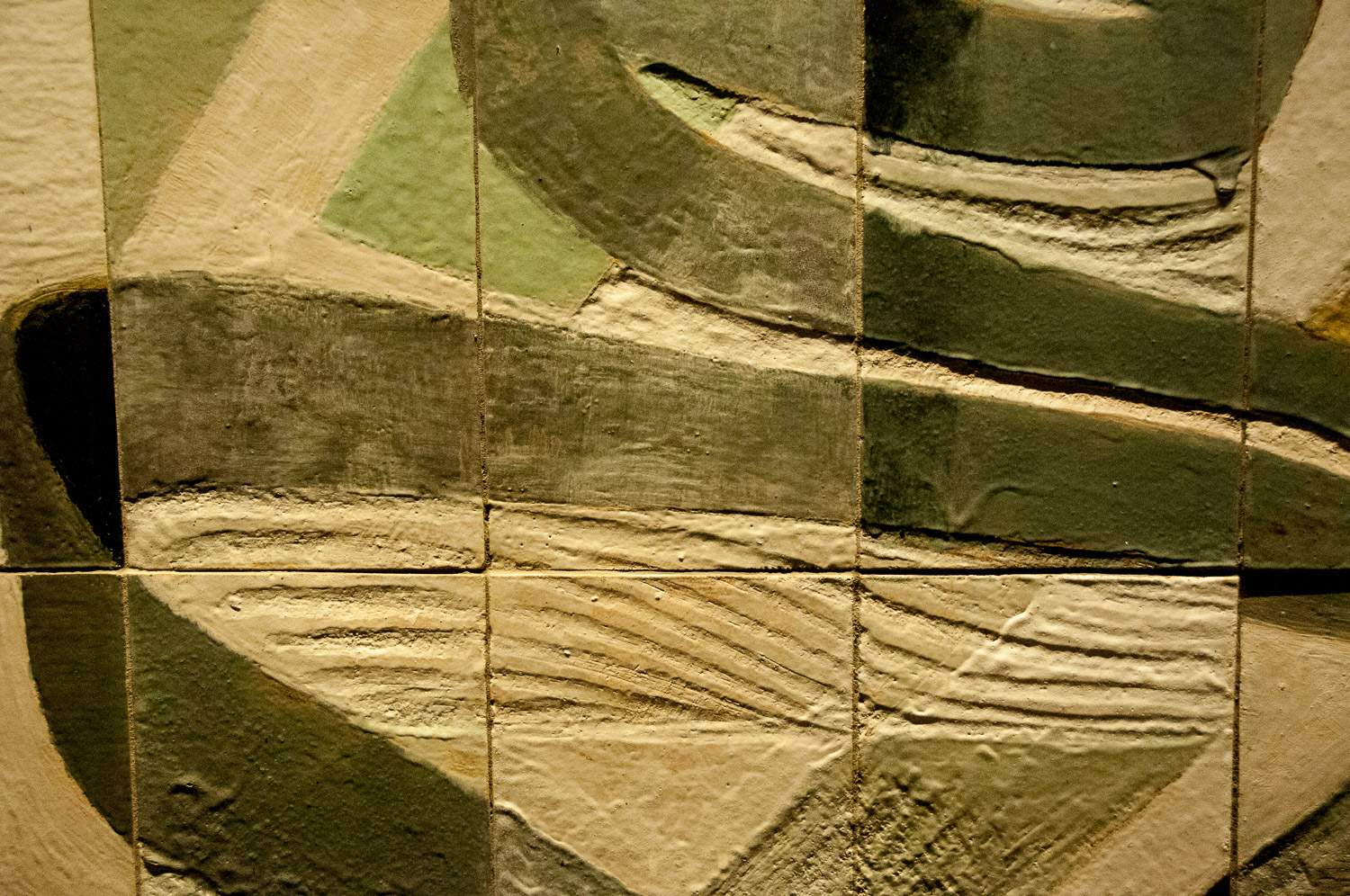
Part of Cables and Communication in Buildings.
And here is the lady herself …

The murals’ original location photographed in 2011 …
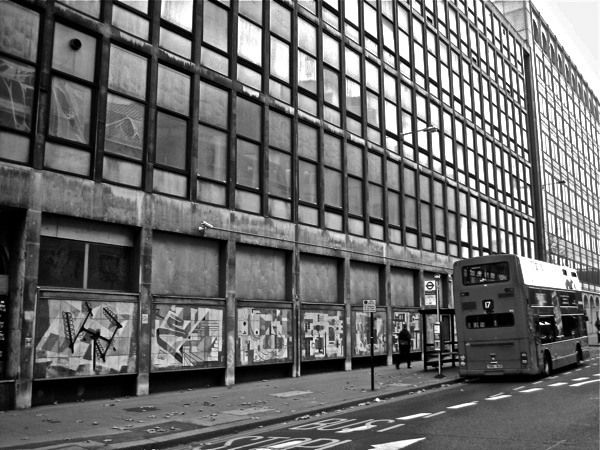
By the way, as you retrace your steps having looked at Gladiator, take a look at the wall on your left. Here are kept the various locking mechanisms for the Centre and, when I first glimpsed them, I honestly thought they were a Modern Art installation …
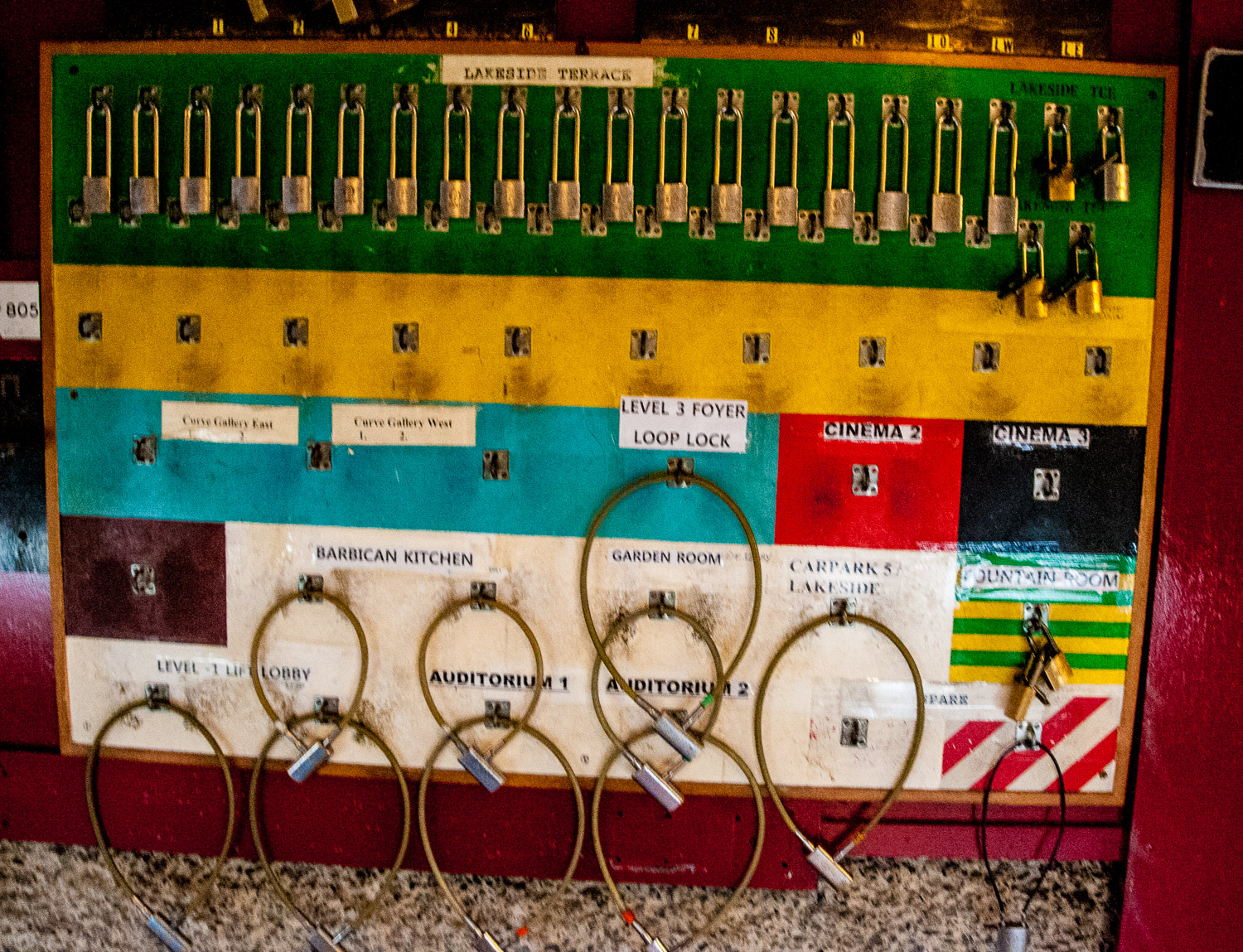
Well they could be, couldn’t they!
